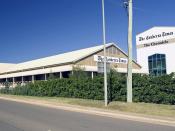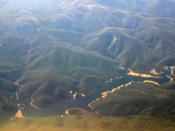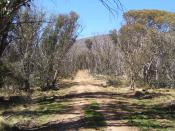Part 1
The bushfires have caused significant damage to water storage sites around the ACT. These sites include Bendora, Corin and Cotter reservoirs. After the firestorm swept through the catchment areas in January, the ground covers were severely burnt with much of the catchment vegetation burnt away. The soils surrounding the reservoirs became unstable by being exposed to intense heat and the loss of plant roots which left the catchments vulnerable to erosion and sediment accumulation. A storm in March 2003 made water from these reservoirs unusable, by washing soil, ash and charcoal and other debris left by the firestorm, into the streams of the burnt catchments. The sediments made the water turbid, added nutrients and salts and reduced the dissolved oxygen in the water. Consequently, water from these reservoirs had to be suspended. (Canberra times)
The cotter river catchment is part of a national park and is heavily protected from outside activities, which may affect water quality.
The water from this catchment is usually of high standard and normally does not require full treatment. Due to the run-off of sediments from bushfire -affected land, Bendora and Corin reservoirs are unusable. They will remain unusable for at least a year until new filtration equipment is installed at Stromlo Water Treating Plant. Bendora and Corin reservoirs have been offline since 8 April 2003 leaving Googong as the sole supplier of Canberra's water. The water from Googong foreshores is situated with rural surroundings including farms and small communities. The water before treatment at Googong is exposed to a lot of pollution from farming causing it to go through extensive treatment. Even with this treatment the quality of the water is not as high as that of the Cotter catchment. Even though the water is within the guidelines for Australian drinking water, it...


